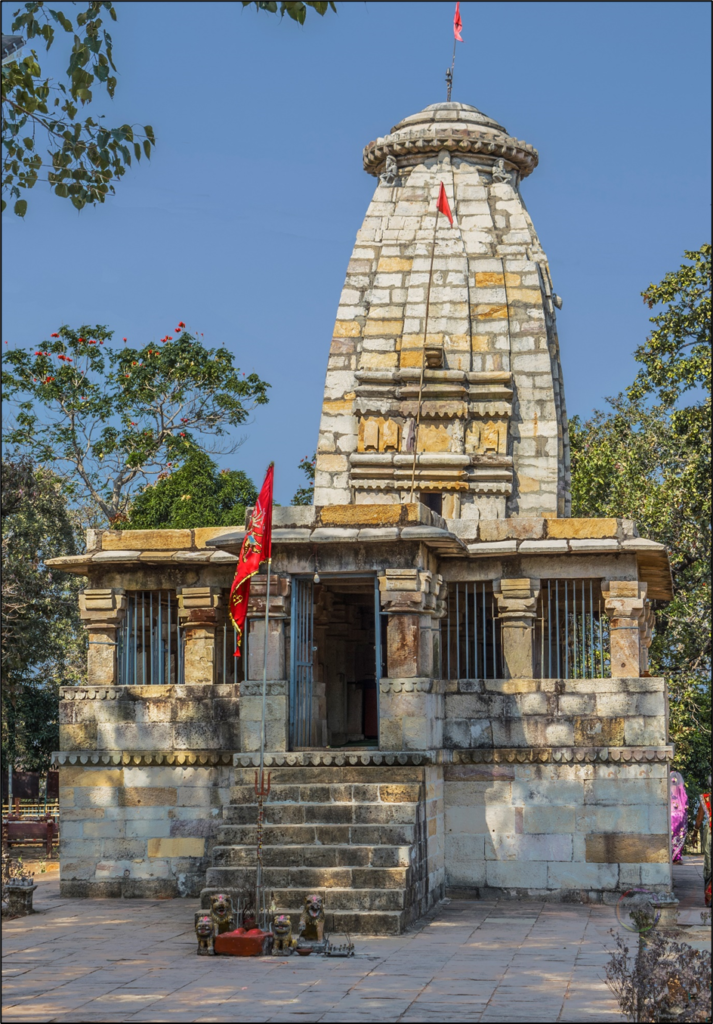Group of Ancient Temples, Amarkantak
Amarkantak is an important pilgrimage town in Annupur, Madhya Pradesh, close to its border with Chhattisgarh. This pilgrimage town is surrounded by the Vindhya and Satpura ranges and the Maikal hills and is famous for the origin of three important rivers, Narmada, Sone and Johila.
Just opposite the Narmada Udgam complex (the temple complex around the point of origin of the river Narmada), is the Group of Ancient Temples. This compound is well-maintained by the Archaeological Survey of India, Bhopal circle. But this compound has a deserted look with hardly any visitors, in spite of thousands of Jain and Hindu pilgrims visiting Amarkantak.
The history of this area dates back to the 8th century A.D. It is said that Shankaracharya built the Surya Kund to mark the origin of the Narmada river. The temples here have a shikara (the towering pointed pyramidal structure) above the main temple hall that showcases the Nagara-style of architecture.
The largest monument here is the Karna temple, named after king Karna. King Lakshmikarna popular by the name Karna, was a ruler of the Kalachuri dynasty of Tripuri in central India. Karna temple has three sanctums built on a raised platform, with a common mandapa. The architecture of this temple shows that it was built at different phases over a few decades.
Panchmatha temple, as the name suggests, is a group of five temples built on a single platform. The temples do not have carvings on the exterior and they are coated with a thick layer of plaster. They were built around the 15-16th century C.E. during the Gond rule.
Pataleshwar temple is built slightly below ground level. It has the pancharatha shikara (five elevations on the temple tower) and a pyramidal mandapa. Shankaracharya is popularly believed to have placed the idol of Shiva in the Pataleshwar temple around the 8th century, however, the temple was built at a later period by the Kalachuri king Karna (1041- 1073 A.D.).
The Shiva temple is also known as the Machendranath temple, and was built in the 11-12th century C.E. The temple has garbhagriha, antarala (a small antechamber between the garbhagriha and the mandapa) and mandapa. The mandapa has lateral slabs on either side of the entrance with short walls not reaching the ceiling. The sanctum is in the pancharatha style. There is an image of a dancing Ganesh inside the temple.
The Vishnu temple is situated adjacent to the Shiv temple and is also known as Keshava-Narayan temple. It has a common entrance and mandapa which leads to two separate garbhagrihas in perpendicular direction.
Johila Temple was built at a later period compared to the other temples.

Pataleshwar temple

Panchmatha temple

Vishnu temple (left side) and Shiv temple (right side)

Shiv temple (left side) and Vishnu temple (right side)
showing two separate garbhagrihas in perpendicular direction
Mahishasur Mardini temple, Chaiturgarh
Chaiturgarh, also known as Lafagarh, is hidden in the vast greenery of Chhattisgarh. It is not a very popular destination among Indian tourists. It is a declared protected monument under the Archaeological Survey of India, Raipur circle.
The fort is situated at a distance of 77 km from Bilaspur, in Korba district under Katghora tehsil. The road to the base of this fort is through a hilly and dense forest area. A small clearing at the base of the hill serves as parking and it has some shops with a limited choice of food. From the base, the trek to the entrance of the fort is very steep and gives an unhindered view of the vast green jungle. Along the way, one can see the huge rocks that have fallen during a landslide. Initially, there were steps to climb up to the fort, and later a ramp was constructed up to the hilltop.
According to the inscriptions, this 10th century fort was built by Raja Prithvideva-I, who was a Ratnapura Kalachuri ruler. The fort originally had three entrances in different directions on the hilltop. At present, the entrance to the fort is through the stone-built Simha Dwar that leads to the historically important Mahishasur Mardini temple. A lot of conservation work has taken place within the fort area and the temple and it is still in progress.
The temple has also been declared as a monument of national importance. This sandstone temple is built on a raised platform and has a flight of stairs that lead to a pillared mandapa. The Nagara-style temple is built on 32 pillars that are said to symbolise the 32 crore Hindu Gods. The garbhagriha is square-shaped and hosts the idol of Adi Shakti Mahisasur Mardini with twelve arms. An image of Ganesh is carved on the lalatabimba. Above the garbhagriha is a curvilinear shikara with pancharatha architecture. It is believed that after killing the demon Mahisasur, goddess Durga rested at this place where the temple was built later. During Navratri, special puja is held in the temple and people from all over Chhattisgarh flock here.

Mahishasur Mardini temple, Chaiturgarh (side view)

Mahishasur Mardini temple, Chaiturgarh (front view)

Dr. Semonti Nandi is a PhD in Pharmacy. She was born and brought up in Shillong, Meghalaya. She has travelled extensively throughout India since childhood. History, art and architecture, old monuments and ruins, have always fascinated her. She documents her travels through photographs and interacts with the locals to know the history and related stories.
